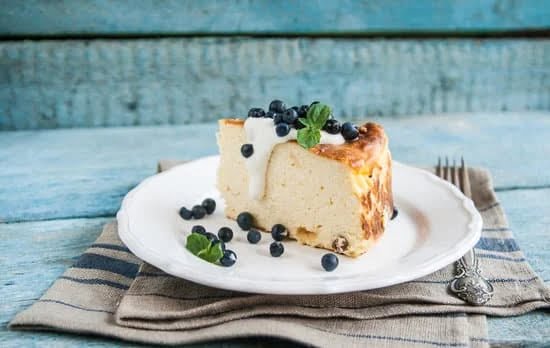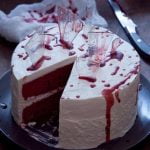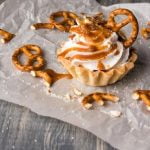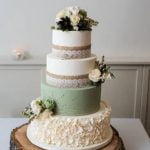Are you a beginner looking to learn how to decorate a cake? Whether it’s for a special occasion or just for fun, mastering the art of cake decorating can be incredibly rewarding. In this article, we will walk you through everything you need to know about decorating a cake for beginners.
From essential tools and equipment to basic techniques and step-by-step guides, we’ve got you covered. By the end of this article, you’ll be equipped with the knowledge and skills to create beautifully decorated cakes that will impress your friends and family.
Decorating a cake is not just about making it look pretty; it’s also about adding a personal touch and creating something truly special. It’s a great way to showcase your creativity and it can even become a therapeutic hobby. With the right guidance and practice, anyone can become proficient in cake decorating. In this comprehensive guide, we will provide you with all the information you need to get started on your cake decorating journey.
Whether you’re looking to bake cakes for special occasions or simply want to try your hand at something new, learning how to decorate a cake is an essential skill for beginners. Not only is it a fun and creative activity, but it also allows you to bring joy to those around you through delicious and beautifully decorated treats. So let’s dive in and discover the wonderful world of cake decorating.
Essential Tools and Equipment for Cake Decorating
When it comes to decorating a cake, having the right tools and equipment is essential for beginners. Without the proper supplies, it can be challenging to achieve the desired results. Some of the essential tools and equipment for cake decorating include piping bags, tips, offset spatula, turntable, cake scraper, and a good quality mixing bowl.
Piping bags and tips are crucial for creating intricate designs on a cake. Beginners should invest in a set of reusable piping bags and a variety of tips to experiment with different textures and patterns. An offset spatula is ideal for spreading frosting evenly on the cake’s surface while giving it a polished look. A turntable makes it easier to ice the cake by allowing it to rotate as you work around its edges.
A good quality mixing bowl is necessary for preparing frosting or fondant. It should be large enough to accommodate all the ingredients without spilling over. Additionally, using a cake scraper helps in smoothing out the frosting and achieving clean edges on the cake. By having these essential tools and equipment, beginners can gain confidence in learning how to decorate a cake with ease.
Choosing the Right Type of Cake for Beginners
When it comes to learning how to decorate a cake for beginners, it’s important to start with the right type of cake. Certain types of cakes are easier to work with and provide a great canvas for decorating. Here are some popular options that are perfect for beginners:
- Vanilla Cake: A classic choice that is versatile and forgiving when it comes to decorating.
- Chocolate Cake: Rich in flavor and easy to cover with icing, making it a good option for beginners.
- Sponge Cake: Light and airy, making it easy to work with when adding decorations.
It’s important for beginners not only pick the right type of cake but also consider the size and shape. A simple round or square cake will be easier to decorate compared to intricate shapes or tiered cakes. As you gain confidence in your decorating skills, you can then experiment with different types of cakes.
In addition, using a sturdy cake recipe will make it easier to handle and less likely to crumble during the decorating process. Once you’ve chosen the right type of cake, it’s time to move on to the basic cake decorating techniques.
Basic Cake Decorating Techniques for Beginners
Decorating a cake can seem like a daunting task for beginners, but with the right techniques and guidance, it can be an enjoyable and rewarding experience. One of the most important aspects of cake decorating is mastering the basic techniques. These techniques serve as the foundation for more advanced skills and allow beginners to create beautiful cakes with confidence.
One of the fundamental cake decorating techniques for beginners is icing a cake smoothly. This involves applying a layer of frosting or icing to the cake in such a way that it appears even and free from imperfections. To achieve this, it is important to use the right tools, such as an offset spatula, and to work with an appropriately softened frosting.
Another essential technique for beginners is piping borders and simple designs onto a cake. This involves using a piping bag and various tips to create decorative borders or add embellishments to the cake’s surface. With practice, beginners can master this skill and use it to personalize their cakes with different patterns and designs.
Additionally, learning how to properly handle fondant is another valuable skill for beginners. Fondant allows decorators to create smooth, polished-looking surfaces on cakes and can be used to make intricate decorations. Understanding how to roll out fondant, cover a cake with it, and shape it into various designs will open up a world of creative possibilities for beginner decorators.
| Basic Cake Decorating Techniques | Description |
|---|---|
| Icing a Cake Smoothly | Using an offset spatula and properly softened frosting |
| Piping Borders and Designs | Using a piping bag and tips to add decorative elements |
| Handling Fondant | Rolling out fondant, covering a cake, and shaping it into designs |
Step-by-Step Guide on How to Ice a Cake
When it comes to decorating a cake, one of the most important steps is learning how to ice a cake properly. This foundational skill sets the stage for adding any additional decorations and ensures that your cake has a smooth, polished appearance. For beginners, this step can feel intimidating, but with the right techniques and tips, you can master the art of icing a cake in no time.
Preparation and Setup
Before you begin icing your cake, it’s important to ensure that you have all the necessary tools and materials ready. This includes a turntable, offset spatula, bench scraper, and a leveler. Additionally, make sure that your cake layers are properly leveled and cooled before starting the icing process. Having everything prepared and organized will make the icing process much smoother for beginners.
Applying an Initial Crumb Coat
To start icing your cake, apply an initial crumb coat using a thin layer of frosting. This coat helps to lock in any loose crumbs and provides a smooth base for adding the final layer of icing. Use an offset spatula to spread the frosting evenly over the top and sides of the cake, ensuring that it is level and free from any crumbs or air pockets.
Adding the Final Layer of Icing
Once the crumb coat has set, it’s time to add the final layer of icing to your cake. Using an offset spatula or piping bag, carefully apply a generous amount of frosting to cover the entire surface of the cake. Use a bench scraper to smooth out the sides and top of the cake, removing any excess frosting as you go. With practice and patience, beginners can achieve a clean and professional-looking finish on their iced cakes.
Learning how to ice a cake is an essential skill for beginners looking to venture into cake decorating. With practice and these step-by-step instructions on how to ice a cake for beginners, you’ll soon be able to create beautifully iced cakes for any occasion.
Tips for Using Piping Bags and Tips for Decorating
When it comes to cake decorating for beginners, using piping bags and tips can be intimidating at first, but with practice and the right techniques, it can become an essential skill in your cake decorating arsenal. Piping bags and tips are great tools for adding intricate designs, borders, and writing on cakes. Here are some tips for using piping bags and tips effectively.
Choosing the Right Piping Tips
There are many different types of piping tips available, each creating a unique design or effect. For beginners, start with a few basic tips such as round, star, and leaf tips. These will allow you to create simple borders and designs on your cakes without overwhelming you with too many options.
Filling the Piping Bag
One common mistake when using a piping bag is overfilling it with icing. Beginners should fill only about two-thirds of the bag to prevent icing from spilling out of the top and making a mess. It’s also important to secure the open end tightly so that icing doesn’t leak out while you’re decorating.
Techniques for Decorating With Piping Bags
Before piping directly onto your cake, practice on a plate or parchment paper to get a feel for the pressure needed to create smooth lines or decorative patterns. Hold the piping bag at a 45-degree angle to the surface of your cake and apply even pressure while guiding the tip where you want the icing to go.
By following these tips for using piping bags and tips for decorating, beginners can begin mastering this essential cake decorating technique in no time. Practice, patience, and experimentation will help you gain confidence in creating beautifully decorated cakes that will impress friends and family alike.
Adding Simple Decorations
As a beginner in cake decorating, adding simple decorations can be an exciting way to take your cakes to the next level. Whether you’re looking to use fondant for a smooth finish, sprinkles for a pop of color, or edible flowers for a delicate touch, there are endless possibilities to explore. Here’s how to decorate a cake for beginners using these simple decorations.
Fondant is a popular choice for creating smooth and elegant finishes on cakes. To start using fondant as a beginner, make sure to knead it until it’s pliable and roll it out to the desired thickness with a rolling pin. Gently drape the fondant over your cake and smooth out any air bubbles or wrinkles with a fondant smoother. Trim off any excess fondant around the base of the cake for a clean look.
Sprinkles are an easy and fun way to add color and texture to your cakes. For beginners, consider using small, round sprinkles or nonpareils that can be easily scattered over the top of your frosted cake. You can also create borders or patterns with sprinkles by gently pressing them into the sides of the cake using your hands or a spoon.
Lastly, edible flowers are a beautiful and natural way to adorn your cakes. As a beginner, make sure to use edible flowers that are safe for consumption and free from pesticides. Some popular options include fresh roses, pansies, violets, and lavender. Before placing them on your cake, gently wash and dry the flowers to remove any dirt or debris.
Overall, adding simple decorations like fondant, sprinkles, and edible flowers is an enjoyable way for beginners to enhance their cake decorating skills. With practice and creativity, you’ll soon be able to create stunning cakes that are both visually appealing and delicious.
| Decoration Type | Beginner Tips |
|---|---|
| Fondant | Knead until pliable before rolling it out |
| Sprinkles | Use small round sprinkles or nonpareils; press into sides of cake for patterns |
| Edible Flowers | Use flowers that are free from pesticides; wash and dry before placing on cake |
Troubleshooting Common Cake Decorating Mistakes for Beginners
Decorating a cake for the first time can be both exciting and challenging. As a beginner, you may encounter some common mistakes that can affect the appearance and overall outcome of your cake. However, with the right tips and techniques, you can easily troubleshoot these issues and improve your cake decorating skills.
Here are some common cake decorating mistakes that beginners may encounter along with solutions:
1. Uneven icing: If you find that your icing is uneven and has air bubbles, it may be due to improper mixing or air pockets in the icing. To fix this issue, make sure to properly mix your icing until smooth and free of air bubbles. You can also use a spatula or bench scraper to smooth out the icing on the cake’s surface.
2. Cracked fondant: Fondant can crack if it’s rolled too thin or if it dries out too quickly. To prevent this issue, make sure to roll your fondant to an even thickness and work quickly when covering the cake. If cracks do appear, gently smooth them out with your fingers or a small amount of shortening.
3. Piping bag leaks: Leaks from piping bags can make decorating a messy experience. To avoid this problem, double-check that your piping bag is securely fitted with the appropriate tip and twist the top tightly before using it. Additionally, avoid overfilling the bag to prevent pressure buildup that can cause leaks.
By addressing these common mistakes and following the solutions provided, beginners can enhance their cake decorating skills and create beautiful cakes with confidence.
Conclusion
In conclusion, learning how to decorate a cake for beginners is an essential skill that can bring so much joy and satisfaction. With the right tools and equipment, the right type of cake, and basic techniques, anyone can create beautiful and delicious works of art. By following step-by-step guides on how to ice a cake and using piping bags and tips for decorating, beginners can gradually build their confidence and improve their skills.
It’s important for beginner cake decorators to not be discouraged by common mistakes that may occur during the decorating process. Instead, they should see these mistakes as learning opportunities and use them as motivation to keep practicing and improving. Adding simple decorations like fondant, sprinkles, or edible flowers can take a plain cake to the next level without requiring advanced skills.
For those who are just starting out on their cake decorating journey, it’s important to remember that practice makes perfect. Experiment with different techniques and don’t be afraid to get creative. And most importantly, have fun with it. Whether it’s baking a cake for a special occasion or just for the joy of creating something beautiful, beginner cake decorators should be proud of their progress and continue exploring new ways to express their creativity through cake decorating.
With determination and perseverance, anyone can become proficient in the art of cake decorating. As beginners continue to learn and grow in their skills, they will be able to tackle more complex techniques and create stunning cakes that will impress family and friends. The key is to stay patient, never give up, and always strive for improvement in their craft.
Frequently Asked Questions
How to Easily Decorate a Cake?
Decorating a cake can be made easier by using simple techniques such as frosting with a palette knife, piping borders and designs, and adding edible decorations like sprinkles or chocolate shavings. Using stencils or pre-made decorations can also simplify the process.
What Does a Beginner Need for Cake-Decorating?
For beginners in cake decorating, some essential items to have include a turntable for easy frosting application, an offset spatula for smoothing frosting, piping bags and tips for creating different designs, a cake leveler to ensure even layers, and basic food coloring for customizing frosting colors.
What Type of Cake Is Easiest to Decorate?
The easiest type of cake to decorate is typically one with smooth sides and flat surfaces, such as a sheet cake or round cake with minimal decorations. This allows for simple frosting application and easy placement of any additional decorations. A buttercream-frosted cake is also beginner-friendly due to its forgiving nature when it comes to smoothing out imperfections.

Welcome to our cake decorating blog! My name is Destiny Flores, and I am the proud owner of a cake decorating business named Cake Karma. Our mission is to provide delicious, beautiful cakes for all occasions. We specialize in creating custom cakes that are tailored specifically to each customer’s individual needs and tastes.





